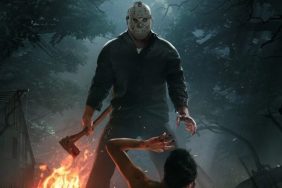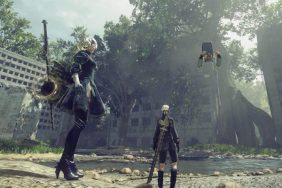Battleborn has now been officially released, though Overwatch is hot on its tail after having debuted its closed beta this week, ahead of its own launch at the end of this month. While it is unfair to judge a complete game alongside an unreleased one, we have now had enough of a taste of each game to know what they offer, and can at therefore reasonably suggest which type of players will likely prefer each game.
As such, we’ve provided a rundown of the core differences and similarities between the two games, in order to help you decide whether to fork out for Battleborn right now, or wait for Overwatch to come along on May 24th.
Here’s our take on which game could be right for you:
Objectives

Though they are both first-person shooters, Battleborn and Overwatch forego the typical focus upon team deathmatches in favor of objective based gameplay. Overwatch is certainly the more traditional of the two, with it featuring game types that will see you capturing/defending certain points on the map, or escorting a payload to its destination a la Team Fortress 2. On the other hand, Battleborn takes its cues from MOBAs such as League of Legends and Dota 2, by requiring the player to help push AI-controlled Minions through pre-determined lanes in order to capture/destroy objectives while fending off the enemy team.
Overwatch matches can typically be completed in around 10 minutes, whereas Battleborn matches can regularly last between 20-30 minutes. In terms of diversity Overwatch arguably has a more varied range of game types, though the high level of teamwork and coordination required in Battleborn lends itself to some intensely chaotic matches. If you’re looking for relatively short bursts of fast-paced gameplay then you’ll likely prefer Overwatch, whereas those who’d prefer lengthy and large-scale battles should try out Battleborn.
Classes

Battleborn and Overwatch both feature a wide range of classes. You have your Tank characters who draw enemy attention and can withstand a ton of punishment; your Support characters, who help out teammates with health regeneration (and damage buffs in Overwatch); your Offense characters, who dish out damage but are incredibly squishy as a result; and your Defense characters, who are most useful when defending an area (duh) but are not so useful when dealing with a bunch of enemies at once.
In Overwatch, players can select whichever character they like, even if a teammate has selected that character, too. The pre-game lobby will also give you a handy rundown of which classes your team is missing, letting you know if you need more healers, or if your current line-up isn’t too great at dealing damage and so on. Battleborn doesn’t provide players with this insight, with it more reliant upon you successfully coordinating yourself as a team in order to decide which characters you’ll need for the upcoming match. Your teammates will also not be able to select the same character as you, meaning that you’ll have to put some extra thought into which character you’ll be playing as. Unlike Overwatch, you also can’t change character mid-match, so you’ll likely want to get some practice with a character before you send them into battle.
However, fundamentally the way classes operate in both games are more or less the same, save for their own individual quirks. Both games clearly take their cues from MOBAs in the ways their classes operate, and both feature something for mostly every kind of player.
Leveling and progression

Both games feature very different progression systems. Battleborn‘s leveling takes place during each game, with players obtaining XP which bumps up their rank, with them then able to unlock a power-up for one of their special abilities. This means that players who perform better in a game will level up faster, becoming more effective as a result. Players who learn how to maximize the amount of XP they can generate during a match are therefore the most valuable to have on your team, as they can swiftly increase their damage output and the special effects of their abilities. This leveling system is also interesting in that each level allows you to decide between two perks, effectively allowing you to customize your own build depending upon how you wish to spec your character. It also features a standard leveling system outside of each match that allows you to unlock new characters and other assorted content.
Overwatch‘s leveling system is limited to customization options, none of which have an impact on its gameplay. Leveling up in the game grants you access to a Loot Box, which can be opened to unlock different skins for the game’s characters, emotes, player icons and sprays (think of the graffiti in Counter-Strike). Given that each Loot Box is randomized, it’ll take an obscenely long time in order to unlock everything in the game, though real-world cash can also be spent to acquire more Loot Boxes. However, given that none of these items can impact the core game, there’s no need to worry that Overwatch will become pay-to-win.
Modes and maps

Battleborn is the only game of the two to feature a story mode, which players can either experience on their own or alongside four other players. This mode tasks players with running through a series of levels, shooting down enemies, completing objectives before taking on mammoth bosses. While it’s certainly not the focal point of the game, with its PvP component being its main selling point, it’s an extra incentive for players to pick it up.
On the other hand, while Overwatch does have its own story, there isn’t a campaign mode to play through. You can choose to play against AI-controlled characters, but there is no unique mode in which players can experience the game’s plot. However, Overwatch does have the edge when it comes to a greater variety of the stuff you’ll get do in its PvP mode. Whereas Battleborn features three modes that have two maps apiece, Overwatch has three modes (plus a Hybrid mode that combines the Assault and Escort game types) with 12 maps in total at the time of its closed beta. This number will likely be increased come its full release.
Developers

Battleborn is developed by Gearbox Software, who are most famous for their Borderlands series and, unfortunately, Duke Nuke Forever. Battleborn features a very similar aesthetic to Borderlands, and a lot of its personality, too, but isn’t quite as off-the-wall. This is the first game the developer has created with competitive play at its forefront.
On the other hand, Blizzard has a notable pedigree when it comes to creating multiplayer-focused games, having previously developed a little game called World of Warcraft. They’re also responsible for the likes of StarCraft I and II, the Diablo series, and Hearthstone, so they certainly now a little something when it comes to creating games with a great deal of replayability. However, Overwatch will be Blizzard’s first FPS, so Gearbox is more experienced in this regard even if Blizzard is vastly more knowledgeable in regards to maintaining the longevity of competitive multiplayer games.
Which game is for you?
If you prefer more methodical gameplay, feel a story mode is a major selling point for you and are intrigued by a shooter with heavy MOBA influences, you should have Battleborn in your sights. However, if you’re looking for a game that’s more fast-paced with a wider variety of modes and maps, and are also sold by the prospect of a Blizzard FPS, then Overwatch is the game for you.
Ultimately, though both games have been frequently compared to each other since they were first announced, they both provide very different experiences and there are unique selling points for each of them. No matter your choice, we’re sure you’ll have a lot of fun either way.








